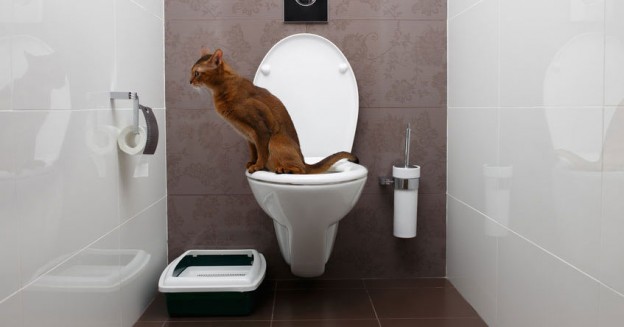Right here down the page you can locate some good quality details pertaining to How to Dispose of Cat Poop and Litter Without Plastic Bags.

Introduction
As feline owners, it's necessary to be mindful of exactly how we deal with our feline buddies' waste. While it might seem hassle-free to purge cat poop down the commode, this practice can have destructive repercussions for both the environment and human health and wellness.
Environmental Impact
Purging feline poop presents hazardous pathogens and bloodsuckers right into the water, posturing a considerable danger to marine environments. These contaminants can negatively impact marine life and compromise water quality.
Health and wellness Risks
In addition to environmental issues, flushing cat waste can also pose wellness threats to human beings. Feline feces may contain Toxoplasma gondii, a parasite that can create toxoplasmosis-- a possibly severe illness, specifically for expecting women and people with damaged immune systems.
Alternatives to Flushing
The good news is, there are much safer and much more liable methods to deal with pet cat poop. Consider the adhering to options:
1. Scoop and Dispose in Trash
The most typical technique of throwing away feline poop is to scoop it right into a naturally degradable bag and throw it in the trash. Be sure to utilize a dedicated clutter scoop and take care of the waste quickly.
2. Usage Biodegradable Litter
Choose eco-friendly cat trash made from products such as corn or wheat. These trashes are eco-friendly and can be safely thrown away in the garbage.
3. Bury in the Yard
If you have a lawn, take into consideration burying cat waste in an assigned location far from vegetable gardens and water sources. Make sure to dig deep adequate to stop contamination of groundwater.
4. Install a Pet Waste Disposal System
Invest in an animal waste disposal system particularly developed for feline waste. These systems make use of enzymes to break down the waste, lowering odor and ecological impact.
Final thought
Accountable family pet ownership extends beyond providing food and sanctuary-- it additionally includes appropriate waste administration. By refraining from purging feline poop down the bathroom and choosing alternative disposal approaches, we can lessen our environmental impact and secure human health.
Why You Should NEVER Flush Cat Poop (and/or Litter) Down Your Toilet
The Problem with Litter
The main function of litter is to solidify and adhere to your cat’s waste. While this makes litter excellent for collecting cat poop and urine, it’s also the exact property that makes it a nightmare when flushed down the toilet.
Cat litter can and will clog pipes. There is non-clumping litter, but it’s still quite heavy and can build up in pipes. This is true even of supposed “flushable litter.”
The problems only compound when the litter is already clumped into cat waste. Toilet paper is among the more flushable things, and even too much of that will clog a toilet.
The Problem with Cat Poop
Sewers and septic systems are designed with human waste in mind. The microbes that help break down human waste don’t work on cat waste. Additionally, cat poop plays host to the parasite Toxoplasma gondii.
When flushed, this parasite can enter the environment in places it was never meant to, posing a risk to pregnant women, their unborn children, and other people with compromised immune systems. While it might not seem possible, flushing cat poop can indeed introduce this parasite to the public water supply.
These reasons are why, even if you’ve trained your cat to go on the toilet and flush, which is possible, it’s still not a good idea. Also, pregnant women and the immunocompromised shouldn’t change litter, either.
How to Handle Litter
The best way to handle litter is to simply put it in a plastic bag and place it in the trash. Avoiding environmental risks and possible plumbing damage is worth the extra effort.
You can also invest in devices that seal away your cat’s waste in a separate compartment, so you don’t have to change the litter nearly as often. They’re also safer for pet owners because they limit the possibility of Toxoplasma gondii exposure.
Disposing of litter the old-fashioned way will ensure you won’t have to worry about any issues that flushing the waste can potentially cause.
Take Care of Clogged Pipes with Stephens Plumbing, Heating & Air Conditioning
The reasons you should never flush cat poop down your toilet are numerous, but sometimes the inevitable happens despite your best efforts.
Stephens Plumbing, Heating & Air Conditioning is ready to help if you’re experiencing litter-blocked plumbing. Whether you need us in an emergency or want to schedule regular maintenance, we’re here for you.
https://www.stephensplumbing.net/bathroom-plumbing/never-flush-cat-poop-down-your-toilet/

I was shown that editorial on Don’t flush cat feces down the toilet from a friend on our other blog. Are you aware of someone else who is very much interested in the niche? Why not promote it. Kudos for your time. Visit us again soon.
Check It Out